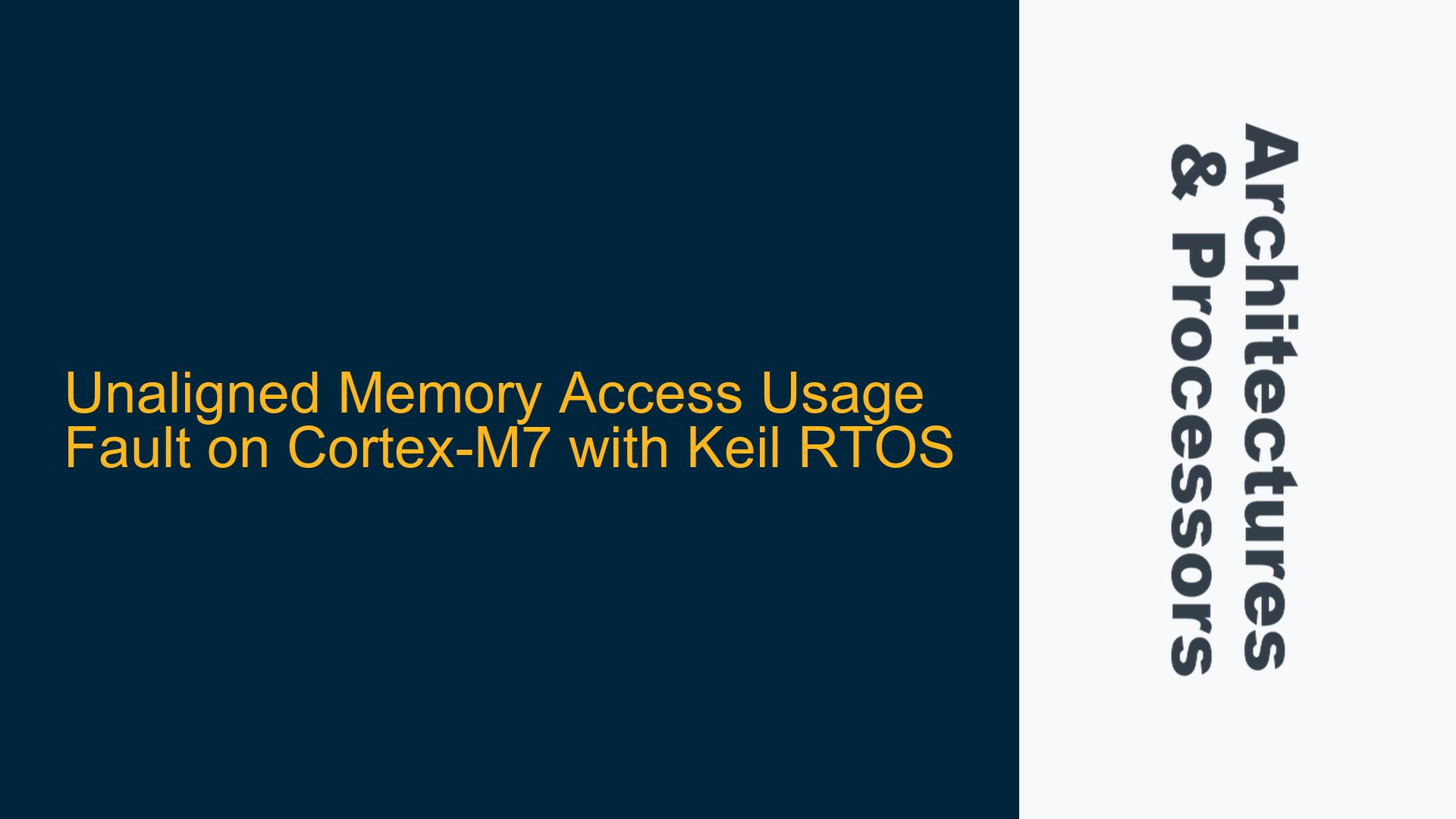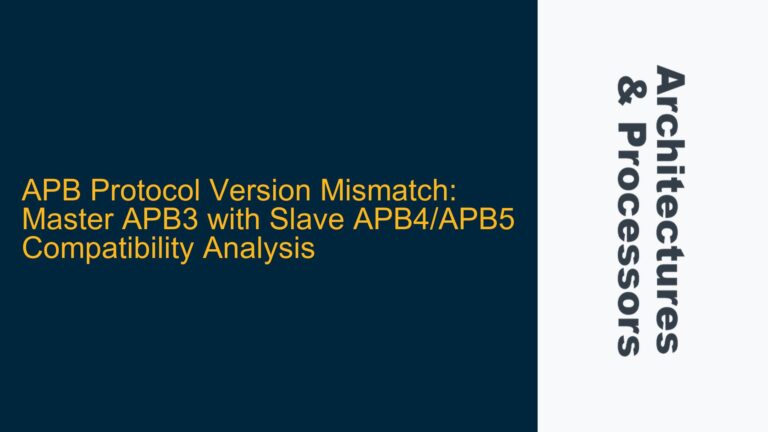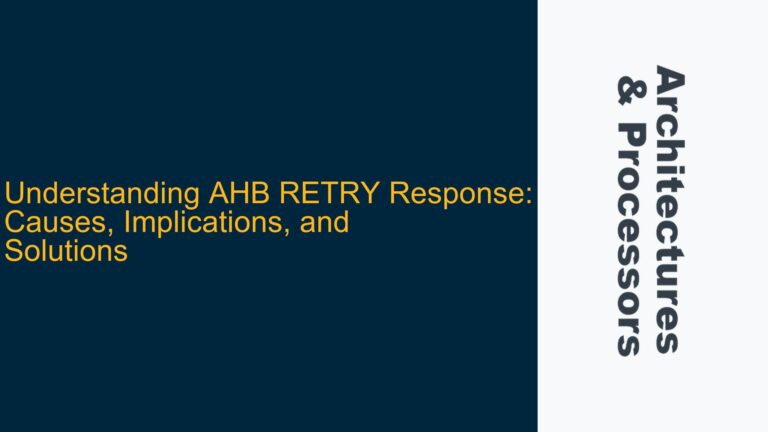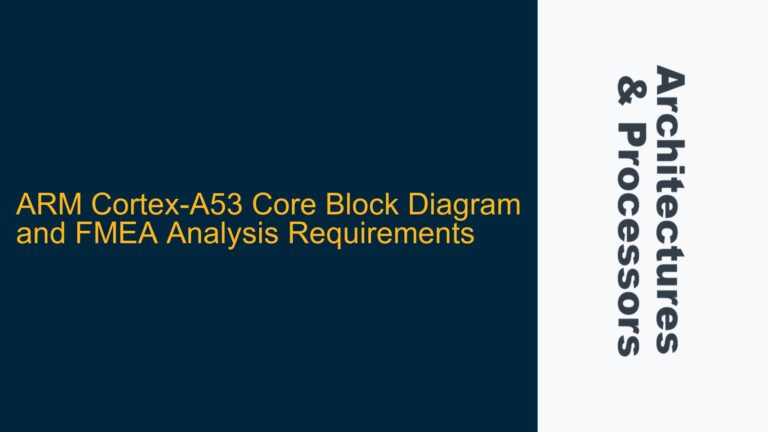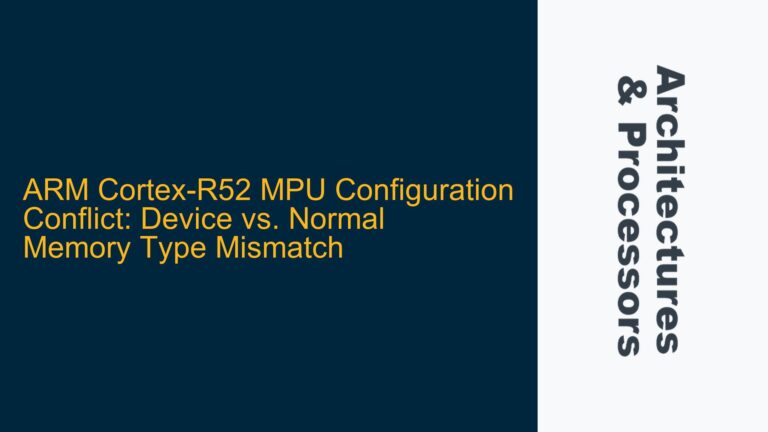Cortex-M7 Usage Fault Due to Unaligned Memory Access in Idle Thread
The Cortex-M7 processor, known for its high performance and advanced features, can occasionally encounter a Usage Fault triggered by an unaligned memory access. This fault is particularly challenging to diagnose when it occurs infrequently, such as every ~500 hours of runtime, and manifests as an Illegal unaligned load or store. The fault is often detected in the osRtxIdleThread, which is a low-priority thread in Keil RTOS responsible for executing when no other tasks are running. The fault is indicated by the HardFault Status Register (HFSR) value of 0x40000000 (Forced Hard Fault) and the Configurable Fault Status Register (CFSR) value of 0x01000000 (Usage Fault due to UNALIGNED access). The Memory Management Fault Address Register (MMFAR) and Bus Fault Address Register (BFAR) are both 0, indicating that the faulting address is not captured, which complicates debugging.
The fault occurs despite the Unaligned Access Trap (UNALIGN_TRP) being disabled, which means the processor is configured to handle unaligned accesses transparently in most cases. However, certain conditions, such as accessing device memory or specific memory-mapped peripherals, can still trigger a Usage Fault. The faulting instruction is not immediately obvious because the program counter (PC) points to a loop in the osRtxIdleThread, which is unlikely to be the direct cause of the unaligned access. This suggests that the fault may be the result of a latent issue elsewhere in the code, such as stack corruption, memory misalignment, or an interrupt occurring at an inopportune time.
Stack Corruption, Misaligned Data Structures, and Interrupt Timing
The root cause of the unaligned memory access fault can be attributed to several potential issues, each of which requires careful investigation. One possible cause is stack corruption, which can occur due to stack overflow, improper stack pointer manipulation, or memory overruns. The Cortex-M7 uses two stack pointers: the Main Stack Pointer (MSP) for exception handling and the Process Stack Pointer (PSP) for task execution. If the stack is corrupted, the processor may attempt to access misaligned memory locations, leading to a Usage Fault. Stack corruption is particularly insidious because it can manifest intermittently, depending on the runtime conditions and the state of the stack.
Another potential cause is misaligned data structures. The Cortex-M7 requires certain data types, such as 32-bit integers and floating-point numbers, to be aligned on 4-byte boundaries. If a data structure is not properly aligned, accessing it can result in an unaligned memory access. This issue can arise from improper use of compiler directives, such as __packed or __attribute__((aligned)), or from manual manipulation of pointers. Misaligned data structures are often difficult to detect because they may not cause immediate issues but can lead to faults under specific conditions.
Interrupt timing is another factor that can contribute to unaligned memory access faults. If an interrupt occurs while the processor is in the middle of a memory access, it can disrupt the alignment of the data being accessed. This is especially problematic in real-time systems where interrupts are frequent and must be handled quickly. The Cortex-M7’s dual-issue pipeline and out-of-order execution capabilities can exacerbate this issue by introducing additional timing variability.
Finally, memory management issues such as improper configuration of the Memory Protection Unit (MPU) or incorrect memory region attributes can also lead to unaligned access faults. The MPU is used to enforce memory access permissions and attributes, such as cacheability and shareability. If the MPU is not configured correctly, it can cause the processor to generate unaligned accesses when accessing certain memory regions.
Debugging Unaligned Access Faults with HardFault Handlers and Memory Analysis
To diagnose and resolve unaligned memory access faults on the Cortex-M7, a systematic approach is required. The first step is to implement a HardFault handler that captures the state of the processor at the time of the fault. The handler should extract the values of the stack pointer, program counter, and other relevant registers from the exception stack frame. This information can be used to determine the context in which the fault occurred and identify the faulting instruction. The following code snippet demonstrates a basic HardFault handler that captures the stack pointer and program counter:
extern void HardFault_Handler(void)
{
__asm volatile
(
"tst lr, #4 \n"
"ite eq \n"
"mrseq r0, msp \n"
"mrsne r0, psp \n"
"ldr r1, [r0, #24] \n"
"ldr r2, handler2_address_const \n"
"bx r2 \n"
"handler2_address_const: .word prvGetRegistersFromStack \n"
);
}
Once the fault context is captured, the next step is to analyze the memory contents and identify any misaligned data structures or stack corruption. This can be done using a debugger such as SEGGER J-Link with Ozone, which allows you to inspect the memory and registers in real-time. Look for patterns such as repeated values, unexpected data, or signs of stack overflow. Pay particular attention to the stack pointer and the memory regions it points to, as stack corruption is a common cause of unaligned access faults.
If the fault is caused by misaligned data structures, you can use compiler directives to ensure proper alignment. For example, the __attribute__((aligned(4))) directive can be used to align data structures on 4-byte boundaries. Additionally, avoid using the __packed directive unless absolutely necessary, as it can lead to unaligned accesses. If you must use packed structures, ensure that all accesses to the structure are performed using byte-wise operations or explicit alignment checks.
To address interrupt timing issues, consider using memory barriers to ensure that memory accesses are completed before an interrupt is serviced. The Cortex-M7 provides several memory barrier instructions, such as DSB (Data Synchronization Barrier) and ISB (Instruction Synchronization Barrier), which can be used to enforce memory access ordering. For example, you can insert a DSB instruction before enabling interrupts to ensure that all pending memory accesses are completed.
Finally, review the configuration of the Memory Protection Unit (MPU) to ensure that memory regions are properly aligned and have the correct attributes. The MPU can be configured to generate faults for unaligned accesses, which can help identify the source of the issue. Use the MPU to enforce alignment requirements for critical memory regions, such as the stack and data structures.
By following these steps, you can systematically diagnose and resolve unaligned memory access faults on the Cortex-M7. The key is to capture the fault context, analyze the memory and stack, and ensure proper alignment and memory management. With careful debugging and attention to detail, you can eliminate these faults and ensure reliable operation of your embedded system.
